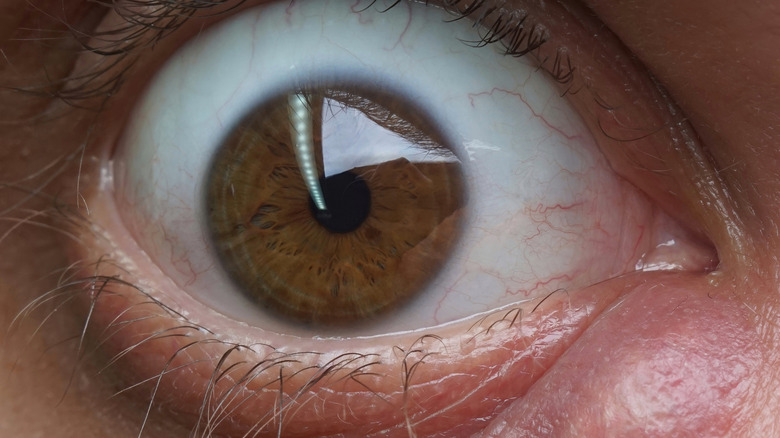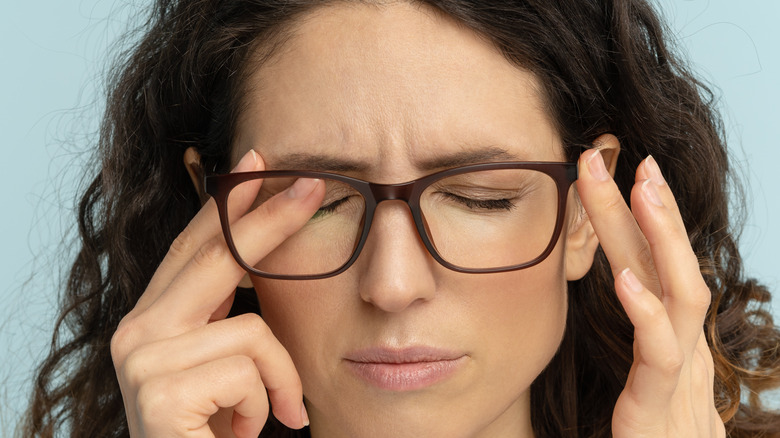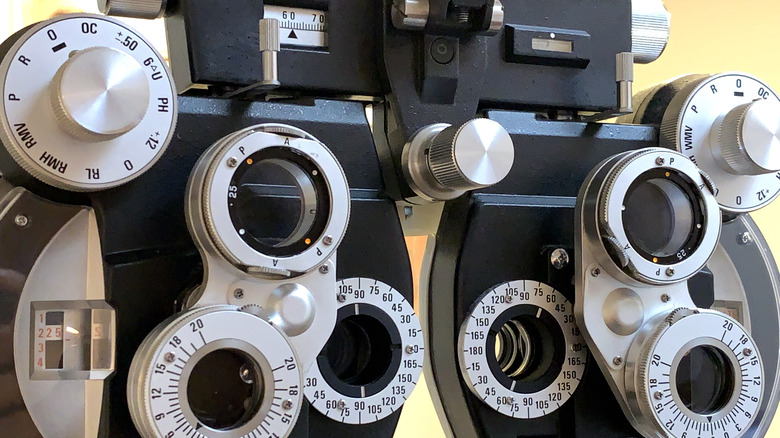The Best Way To Treat An Ingrown Eyelash
We've all had pesky ingrown hair at one time or another, and no area where we grow hair is safe from this ailment, including our eyelids.
When an eyelash grows in toward the eye, rather than outward, it's called an ingrown eyelash or trichiasis, according to Johns Hopkins Medicine. According to Healthline, this can be caused by inflammation, trauma to the affected area, or certain eye conditions. Ingrown eyelashes can usually be identified by soreness and redness on the upper or lower eyelid and may be accompanied by symptoms like swelling, watery eyes, and blurred vision.
Painful and irritating symptoms can be treated with over-the-counter rinses, eye drops, and ointments, as well as a warm, damp compress. In order to fully alleviate the problem, however, you'll have to remove the ingrown hair entirely by plucking it out. The eyelash will likely grow back and may become ingrown again, so here's your best bet for treating ingrown lashes and keeping future ones at bay.
Identifying an ingrown eyelash
An ingrown eyelash could easily be mistaken for a stye — or an infected gland eye gland — as a stye will also produce a red, painful bump on the eyelid. However, when trichiasis is the cause, you may notice that some or many of your eyelashes in the affected area seem to be growing toward the eye, rather than away from it.
Unlike a stye, when an ingrown eyelash is to blame, you will likely feel the constant sensation of having something in your eye. MedicalNewsToday states that's because a coarse, misdirected eyelash is likely brushing against your eye every time you blink. If left untreated, the affected eyelash could scratch your cornea or develop into an infection, leading to serious eye damage. For this reason, you'll want to make an appointment with your eye doctor as soon as possible to ensure you receive the proper treatment.
Treating trichiasis
There are a few things you can do at home to help alleviate the pain and discomfort that comes with an ingrown eyelash. Your neighborhood drug store will have a slew of ointments and eye drops to help with pain and redness. A warm, damp compress can also be made by soaking a clean washcloth in warm water and applying it to the area for 10 minutes at a time.
However, these are just steps to soothe symptoms. Extraction is a must in order to fully remedy the problem. If you feel comfortable doing so, you may be able to remove the problem hair yourself, or with the help of a friend or family member. If you're unable to remove the hair on your own, your doctor will be able to remove the impacted hair with forceps or pincers.
As is detailed by Verywell Health, your doctor may suggest further steps in treating your trichiasis. As it tends to be a recurring problem, electrolysis or laser hair removal is a safe and effective treatment in treating the troublesome hair follicles and preventing regrowth. Cryosurgery, or the freezing of the hair follicles, is also a common treatment. In extreme recurring cases, you might also be advised to have a simple, corrective surgery to redirect the hair growth. Speak with your doctor about which options might be best for you to avoid any future ingrown eyelashes and consequential eye damage.



